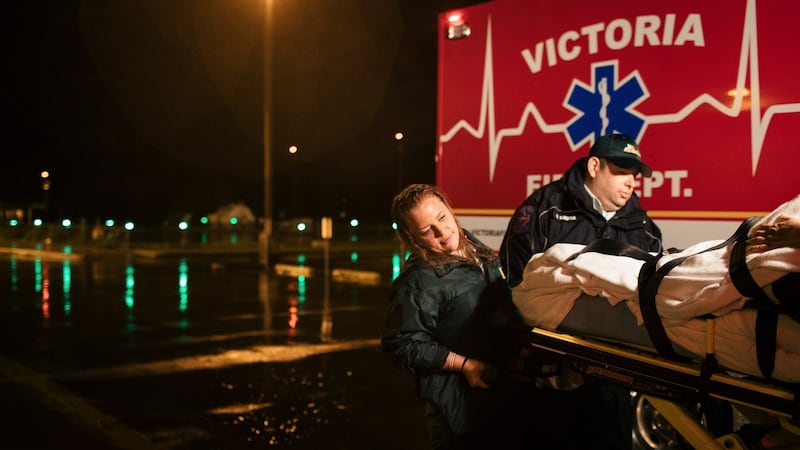Water poured into hospitals. Ambulances were caught up in roiling floodwaters. Medical transport helicopters were grounded by high winds. Houston's world-renowned health care infrastructure found itself battered by Hurricane Harvey, struggling to treat storm victims while becoming a victim itself.
The coming days will inevitably bring more hazards for storm-damaged hospitals and nursing homes, and their patients and staff. The scenes of turmoil across Texas raised the spectre of the extreme flooding following Hurricane Katrina in 2005, when dozens of hospital and nursing home patients died, and doctors awaiting rescue at one stranded, powerless hospital became so desperate, they intentionally hastened the deaths of their patients.
The response to Harvey, now a tropical storm but still wreaking havoc over the state, promises answers to whether health officials learned lessons from the catastrophe of Katrina when it comes to the medically vulnerable – in particular whether they did enough to prepare for the disaster and to move patients out of its path.

"We've made significant investments," said Dr Umair Shah, executive director of Harris County's public health department. "The challenge is until it unfolds there's so many moving pieces and it's never the same as the situations you've previously encountered."
Emergency service personnel point to dozens of improvements, from better engineered structures to well-practised co-operation, that are helping protect lives. Still, sometimes even the soundest plans have been foiled.
Water rose in the basement of Ben Taub Hospital, a major county trauma centre in the vast Texas Medical Center campus that had spent billions of dollars on flood protections after being devastated in Tropical Storm Allison in 2001. Officials announced an evacuation Sunday, but hours later, a hospital spokesman said it had not yet begun because the hospital was surrounded by water and rescuers could not reach its 350 patients.
Six to 10 other hospitals and various nursing homes, some in rural communities, were also evacuated after the storm made landfall, said Darrell Pile, chief executive of the Southeast Texas Regional Advisory Council, which established a catastrophic medical operations centre in Houston's emergency command centre.
While some vulnerable hospitals and nursing homes opted to move their patients out of the region in the hours before the storm, Pile said, others “did not know to necessarily expect this level of chaos”. A large coalition of medical providers had drilled and planned regularly for catastrophes, he added, “but honestly, not at this epic level”.
Power outage
Most hospitals in Houston continued operating and they reported that they were doing well. But some, ringed by floodwater, were cut off from patients trying to reach them. Hospital staff members had trouble getting to work as well. In other parts of the state, Harvey knocked out utilities, forcing hospitals to rely on vulnerable backup systems.
The wind and rain were threatening at Citizens Medical Center in Victoria, a city of about 68,000 people roughly 200km southwest of Houston, when emergency workers loaded patients on to a mass evacuation ambulance while roads were passable late on Saturday night. Amid the stressful scene, one older woman clutched a brown teddy bear while waiting to be taken aboard.
“As much as we want to help our patients, I know we can help them more by getting them to a safer spot,” said Dr Daniel Cano, the hospital’s medical director. The hospital’s generators did not power air conditioning and when city power switched it back on after a day without, it took hours for the humidity to seep out of the hospital.
Hundreds of patients had remained in Victoria’s hospitals during Harvey. But after a power outage and a threat to the running water supply, and with flooding in the area expected to worsen, all were taken to San Antonio and elsewhere across the state, officials said.
Jennifer Schulte, director of marketing for Citizens, said some critically ill patients had been transferred before Harvey made landfall, when a mandatory evacuation of the city was announced a day before. But the short time window meant that 80 other patients could not be moved. "The roadways there were very clogged up," she said. "That would require patients to sit and wait. For some, in their condition, it would not be safe."
New York Times












